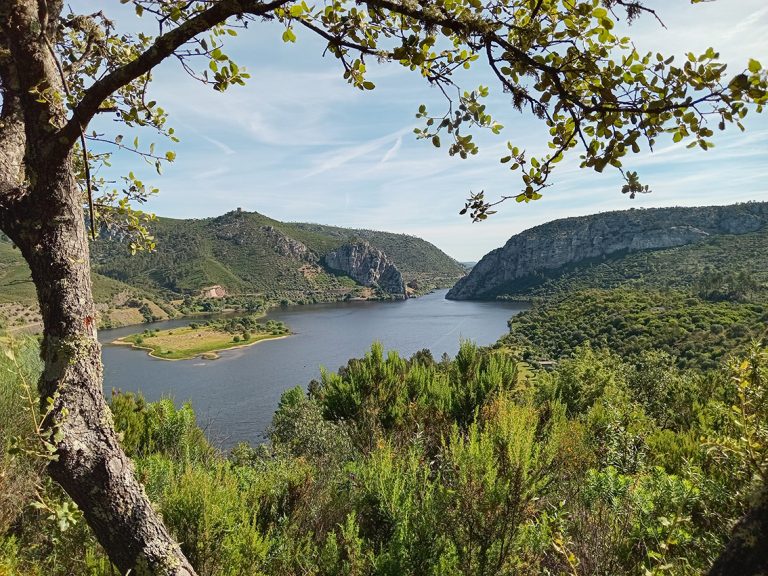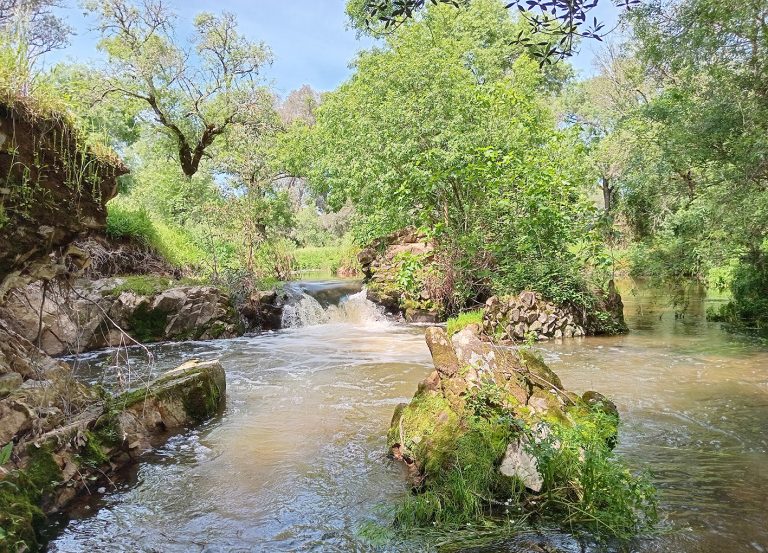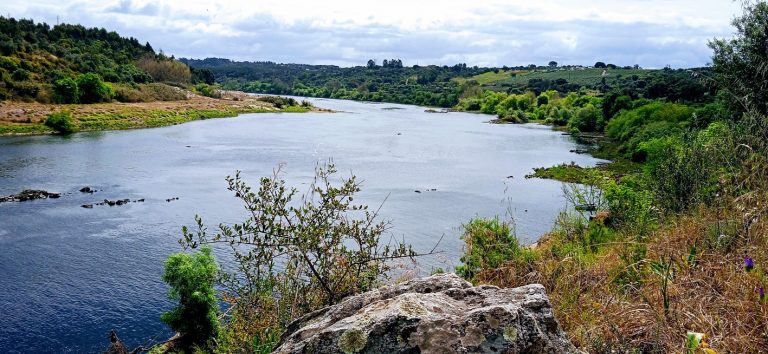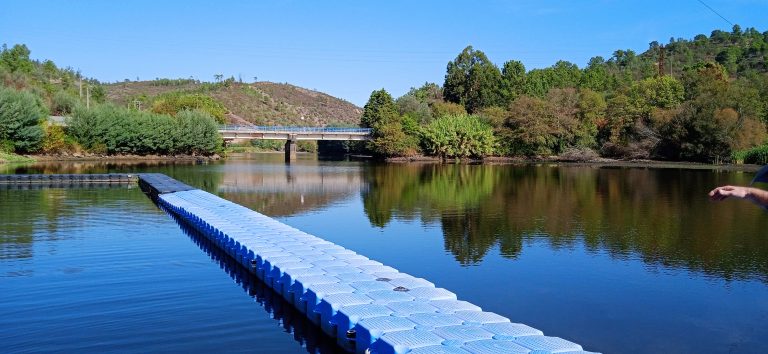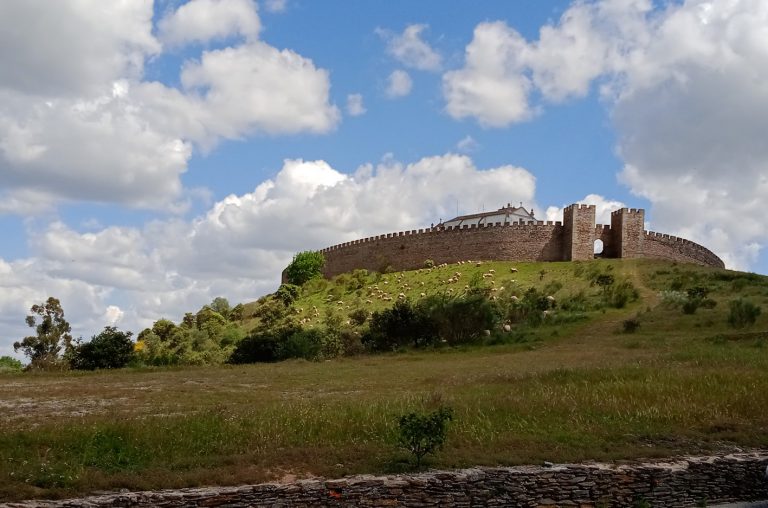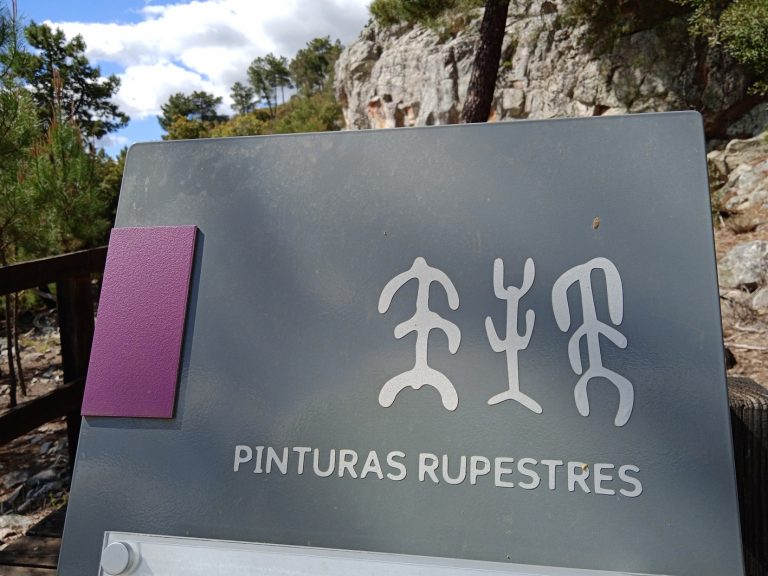Our second road trip in April 2024 took us north to Nisa and surroundings in upper Alentejo. We hadn’t set out to make a major trek but while visiting the tourist office we picked up a leaflet and map of PR9 Trilho da Mina de Ouro do Conhal (Hike of the Roman Gold Mines), which sets out from a little village called Arneiro close to the Rio Tejo that divides the Alentejo region from Beira Baixa.
For the first road-trip of the year in our van we didn’t want to venture too far from home. The weather was forecast to reach 30° and we were ready to try out camping in an ASA (service area for camper vans) rather than a costly campsite. So checking on the trusty Park4Night app within a 100km radius of Estremoz, we decided on the Viana do Alentejo area, and in particular Valverde and Alcáçovas. With just a little research online we soon found that we would be able to combine country hikes, nature, history, culture and good food in a short two-night stopover. Perfect!
We’re always looking for short-drive destinations that are within 100km radius from Estremoz to get away for a few days in our self-built camper—and one of our favourite places to visit is the Rio Tejo (Tagus) that delineates the northern border of the Alentejo region in Portugal. Over the past few years several river beaches (praias fluviais) have been set up along the banks of the river,
The Alentejo region of Portugal is the largest by area in the country, and it stretches all the way north to the River Tagus (Tejo), that flows into the sea at Lisbon. Having heard there were some great river beaches and passadiços (wooden walkways) to explore, we decided to take a trip to Alentejo Alto to see for ourselves. Only an hour and a half’s drive from Estremoz, we trundled off in the ‘bus’ to the municipal campsite at Ortiga, which is a small village that falls under the municipal district of Gavião.
As we are still only just discovering the Alto Alentejo region of Portugal, for us camping is all about experiencing new places that are not necessarily long road trips away. So in late April we drove to Vimieiro, a village that is only 30 minutes from Estremoz in the district of Arraiolos.
I was really looking forward to seeing these ‘prehistoric’ cave paintings – as I had never seen any before – until a friend pointed out that they are actually around 5,000 years old, so not really pre-historic. More like Bronze Age rock art created by hunters and gatherers.

